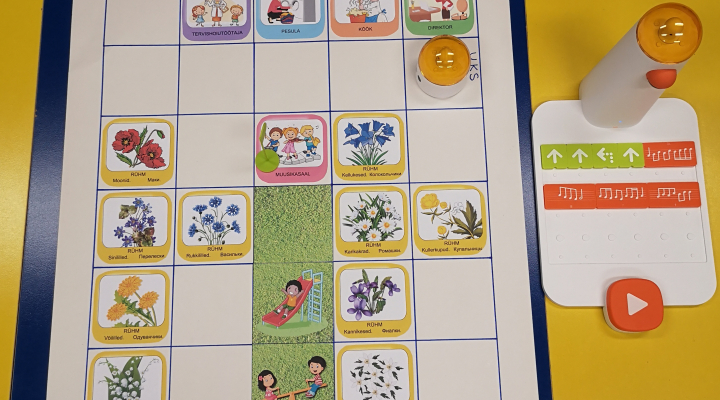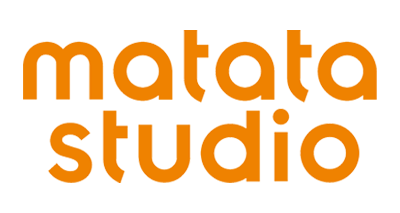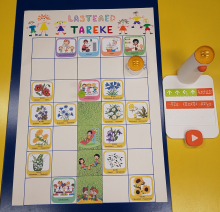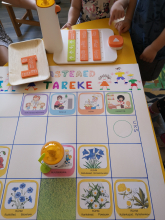
How was the MatataStudio robot(s) used?
Below is our action plan for the next school year During the school year (01.09.2020-31.08.2021) we use the robot in learning and play activities according to the kindergarten’s study and action plan.
Topics of the kindergarten action plan in the 2020/2021 academic year: • September: “Autumn is here”; • October: “Waste and rubbish”; • November: “Safe traffic”; • December: “The Joys of Winter”; • January: “Health and well-being”, • February: “Estonia – mmu homeland”; • March: “Theater Month”; • April: “Spring is here”; • May: “Water”; • June: “Summer is here”; • July: “Sea and Coast”; • August: “Biodiversity and Nature”
After that, we use the robot in external activities:
We participate in the international Erasmus + projects “ECO – us support!”, “Healthy eating and movement for a better quality of life”, “Découvrir et partager nos propres cultures pour créer ensemble notre culture Européenne”. We take part in eTwinning projects: finding partners, creating and running a joint learning project.
We participate in the “Green School” program
We carry out individual activities with children, including groups with children with special needs. September-October 2020: Conducting CODE WEEK activities in kindergarten and participating in events outside
kindergarten. Workshops for teachers: learning to use new robotics devices, introducing them and introducing them to other kindergarten teachers in practical workshops. Workshops for children.
November: Celebrating Father’s Day with a robot
December: “Robots can dance and play music” (Children make beautiful Christmas clothes for robots, use Christmas music, create dances for robots and dance with robots). Cooperation with other child care institutions.
November-December: we participate in Robotex (both as a participant and as a workshop).
January: sports competition “Robot going through the maze”. Cooperation with other child care institutions.
February: “Traveling of robots across Estonia” (conducting a quiz, drawing Estonian symbols, etc.). Cooperation with other child care institutions.
March: “Telling fairy tales with robots” (costume preparation). Cooperation with other child care institutions.”Costume Exhibition”.
April: Open learning activities “The robot is our helper” (each teacher shows an interesting and useful learning activity).
May: Creative drawing exhibition “From nature through the eyes of robots”. Cooperation with other child care institutions.
September 2020 – May 2021:
We share our experiences on Facebook pages. Creating a blog “Robotics” on the kindergarten website. Creating your own book “Robotics in kindergarten”. Improving the field of kindergarten curriculum “Robotics”. Further development of educational activities in the field of robotics. Videos and / or images of the activities, trainings and workshops will be produced and covered in the media.
What skills did it develop?
Integrated activities: Robotics, language and speech, me and the environment, mathematics, music, Estonian as a second language, movement, art.
The aim is to support the areas in the curriculum (general skills, language and speech, mathematics, me and the environment, movement, music, art, robotics).
Integrating robotics with other areas of learning and education: General skills Using robotics equipment:
1) the child develops cooperation and problem-solving skills, the ability to perceive oneself and partners, to consider others, to explain one’s views;
2) the child improves perception (visual, auditory, spatial, temporal, kinesthetic perception), memory (both verbal and non-verbal memory, auditory and visual memory) and attention (intentional attention, ability to concentrate, switching skills), fine motor skills;
3) the child learns to communicate, adopts generally accepted practices in society and proceeds from ethical beliefs;
4) the child’s thinking develops (logical thinking, analysis and synthesis skills, comparison, consequence of finding connections, inferring, creating connections between everyday life and different subject areas), understanding the rules of behavior, motivation to learn, to acquire new knowledge;
5) the child learns to share and wait, to clean up after himself. Me and the environment
Using robotics equipment for a child:
1) understands and feels the surrounding world as a whole;
2) has an idea of himself or herself and the roles of himself or herself and others in the living environment;
3) values both Estonian cultural traditions and the cultural traditions of his or her nation;
4) values his or her own health and the health of others and tries to behave healthily and safely;
5) values the environmentally friendly and environmentally friendly way of thinking;
6) notices phenomena and changes in nature Language and speech
Using robotics equipment:
1) the child expresses himself / herself intelligibly, is able to convey his or her thoughts and intentions;
2) the child develops reading and writing skills, storytelling and description skills;
3) the child acquires a new vocabulary.
Mathematics
1) dealing with robotics supports the concepts of: quantities, counting and numbers, calculation, sizes and measurement, sorting, geometric shapes, days of the week, but, seasons of learning; Using robotics equipment:
2) the ability to orientate in space and on paper, develops in a defined area;
3) the ability to find, analyze and explain logical connections develops. Art, Music
Using robotics equipment:
1) the child enjoys creative self-expression;
2) the child can compose his or her favorite music;
3) the child is able to create new simple pieces of music and drawings. Movement
Using robotics equipment:
1) develops the child’s attention and accuracy;
2) the child wants to move and enjoys the movement;
3) is able to make efforts in the name of purposeful activities;
4) actively works alone and in a group; Estonian as a second language Using robotics equipment for a child:
1) is interested in the Estonian language and culture;
2) wishes and dares to communicate in Estonian with both peers and adults;
3) recognizes and understands Estonian words and simpler expressions;
4) uses simpler Estonian words and expressions in everyday communication
What worked best and what was challenging?
MatataStudio Pro set, because there are currently three sets of MatataStudio sets in kindergarten, but practice has shown that our kindergarten teachers really like MatataStudio and at least three sets of groups are needed to carry out teaching activities properly. But in kindergarten, robotics devices are used by 8 groups. With the help of MatataLab, it is possible to diversify learning activities. In Matatalab, children learn programming through playful and manual activities. Children can program the robot to draw various graphic elements. Kids can compose their favorite music or create something completely new.
How did students respond?
MatataLab have a positive effect on teaching and guiding children, they motivate children: provide a good opportunity for exploration in a learning environment. Robotic gadgets – is an exciting learning opportunity where the child is in an active role. The use of digital tools supports and activates children, arouses children ‘s interest and provides an opportunity to diversify the teacher’s work and improve the teaching of the subject. Children like that the robot can draw and play music.
Share your comments upon the class using Matatalab
Matatalab is suitable for use by preschoolers. Matatalab is a learning tool that makes the learning process exciting; is compact and easy to use; a big bonus is the guides and teacher materials / lesson plans that come with the product. Before the teacher starts using Matatalab in class, he should play with it himself and test all the instructions to understand exactly how the robot moves and how to place the blocks on the base. Teacher materials should also be explored to make it clear how and where to start with children. Matatalabi can be linked to all subject areas of pre – primary education (me and the environment, language and speech, mathematics, art, music. definitely recommend that colleagues try it and use it in their studies. As the whole set is well packaged, it is very convenient to use. The tool is easy to take out and reassemble later. However, the tool does not require much space to move around so it can be used freely for desktop activities.

 日本語
日本語



